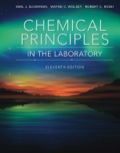
Using Figure 3.1, determine
a. the number of grams of
b. the number of grams of water required to dissolve
c. the number of grams of water required to dissolve
d. the number of grams of water required to dissolve a mixture containing
(a)
Interpretation:
The number of grams of
Concept introduction:
Solution is a homogenous mixture of two or more components. A sample taken from any part of the solution will have the same composition as the rest of the solution. Many chemical reactions occur in water solutions.
Answer to Problem 1ASA
The number of grams of
Explanation of Solution
The given illustration of the graph is shown below.
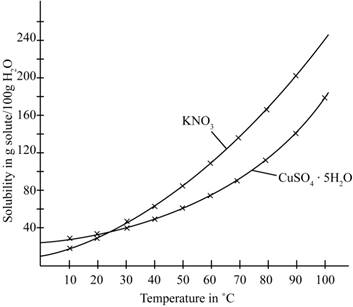
Figure 1
According to the above graph, the number of grams of
The number of grams of
(b)
Interpretation:
The number of grams of water required to dissolve
Concept introduction:
Solution is a homogenous mixture of two or more components. A sample taken from any part of the solution will have the same composition as the rest of the solution. Many chemical reactions occur in water solutions.
Answer to Problem 1ASA
The number of grams of water required to dissolve
Explanation of Solution
The given illustration of the graph is shown below.
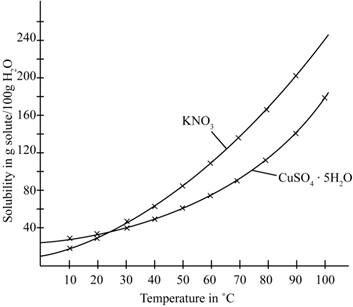
Figure 1
According to the above graph, the number of grams of
Thus, water required to dissolve
The number of grams of water required to dissolve
(c)
Interpretation:
The number of grams of water required to dissolve
Concept introduction:
Solution is a homogenous mixture of two or more components. A sample taken from any part of the solution will have the same composition as the rest of the solution. Many chemical reactions occur in water solutions.
Answer to Problem 1ASA
The number of grams of water required to dissolve
Explanation of Solution
The given illustration of the graph is shown below.
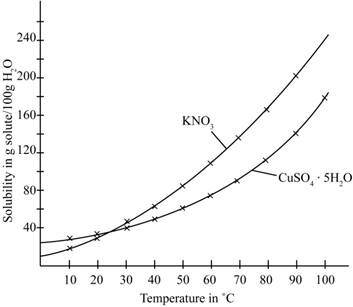
Figure 1
According to the above graph, the number of grams of
Thus, the water required to dissolve
The number of grams of water required to dissolve
(d)
Interpretation:
The number of grams of water required to dissolve a mixture containing
Concept introduction:
Solution is a homogenous mixture of two or more components. A sample taken from any part of the solution will have the same composition as the rest of the solution. Many chemical reactions occur in water solutions.
Answer to Problem 1ASA
The number of grams of water required to dissolve a mixture containing
Explanation of Solution
The given illustration of the graph is shown below.
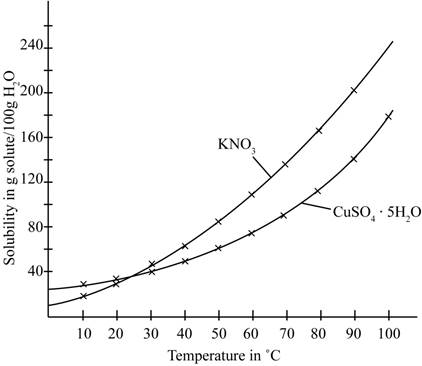
Figure 1
The amount of water required to dissolve
The amount of water required to dissolve
Therefore, the total amount of water required to dissolve a mixture containing
The number of grams of water required to dissolve a mixture containing
Want to see more full solutions like this?
Chapter 3 Solutions
EBK CHEMICAL PRINCIPLES IN THE LABORATO
- A laser emits a line at 632.8 nm. If the cavity is 12 cm long, how many modes oscillate in the cavity? How long does it take for the radiation to travel the entire cavity? What is the frequency difference between 2 consecutive modes?(refractive index of the medium n = 1).arrow_forwardA laser emits a line at 632.8 nm. If the cavity is 12 cm long, how many modes oscillate in the cavity? How long does it take for the radiation to travel the entire cavity? What is the frequency difference between 2 consecutive modes?(refractive index of the medium n = 1).arrow_forwardThe number of microstates corresponding to each macrostate is given by N. The dominant macrostate or configuration of a system is the macrostate with the greatest weight W. Are both statements correct?arrow_forward
- For the single step reaction: A + B → 2C + 25 kJ If the activation energy for this reaction is 35.8 kJ, sketch an energy vs. reaction coordinate diagram for this reaction. Be sure to label the following on your diagram: each of the axes, reactant compounds and product compounds, enthalpy of reaction, activation energy of the forward reaction with the correct value, activation energy of the backwards reaction with the correct value and the transition state. In the same sketch you drew, after the addition of a homogeneous catalyst, show how it would change the graph. Label any new line "catalyst" and label any new activation energy.arrow_forwardHow many grams of C are combined with 3.75 ✕ 1023 atoms of H in the compound C5H12?arrow_forwarde. f. CH3O. יון Br NaOCH3 OCH 3 Br H₂Oarrow_forward
 Chemistry: Principles and PracticeChemistryISBN:9780534420123Author:Daniel L. Reger, Scott R. Goode, David W. Ball, Edward MercerPublisher:Cengage Learning
Chemistry: Principles and PracticeChemistryISBN:9780534420123Author:Daniel L. Reger, Scott R. Goode, David W. Ball, Edward MercerPublisher:Cengage Learning Chemistry: The Molecular ScienceChemistryISBN:9781285199047Author:John W. Moore, Conrad L. StanitskiPublisher:Cengage Learning
Chemistry: The Molecular ScienceChemistryISBN:9781285199047Author:John W. Moore, Conrad L. StanitskiPublisher:Cengage Learning Chemistry & Chemical ReactivityChemistryISBN:9781337399074Author:John C. Kotz, Paul M. Treichel, John Townsend, David TreichelPublisher:Cengage Learning
Chemistry & Chemical ReactivityChemistryISBN:9781337399074Author:John C. Kotz, Paul M. Treichel, John Townsend, David TreichelPublisher:Cengage Learning Chemistry & Chemical ReactivityChemistryISBN:9781133949640Author:John C. Kotz, Paul M. Treichel, John Townsend, David TreichelPublisher:Cengage Learning
Chemistry & Chemical ReactivityChemistryISBN:9781133949640Author:John C. Kotz, Paul M. Treichel, John Townsend, David TreichelPublisher:Cengage Learning Introduction to General, Organic and BiochemistryChemistryISBN:9781285869759Author:Frederick A. Bettelheim, William H. Brown, Mary K. Campbell, Shawn O. Farrell, Omar TorresPublisher:Cengage Learning
Introduction to General, Organic and BiochemistryChemistryISBN:9781285869759Author:Frederick A. Bettelheim, William H. Brown, Mary K. Campbell, Shawn O. Farrell, Omar TorresPublisher:Cengage Learning General, Organic, and Biological ChemistryChemistryISBN:9781285853918Author:H. Stephen StokerPublisher:Cengage Learning
General, Organic, and Biological ChemistryChemistryISBN:9781285853918Author:H. Stephen StokerPublisher:Cengage Learning





